Matador: "Once you get away from automation, the music has a looser feel"
We marvel at Gavin Lynch's enviable toolkit in his impressive Irish studio space
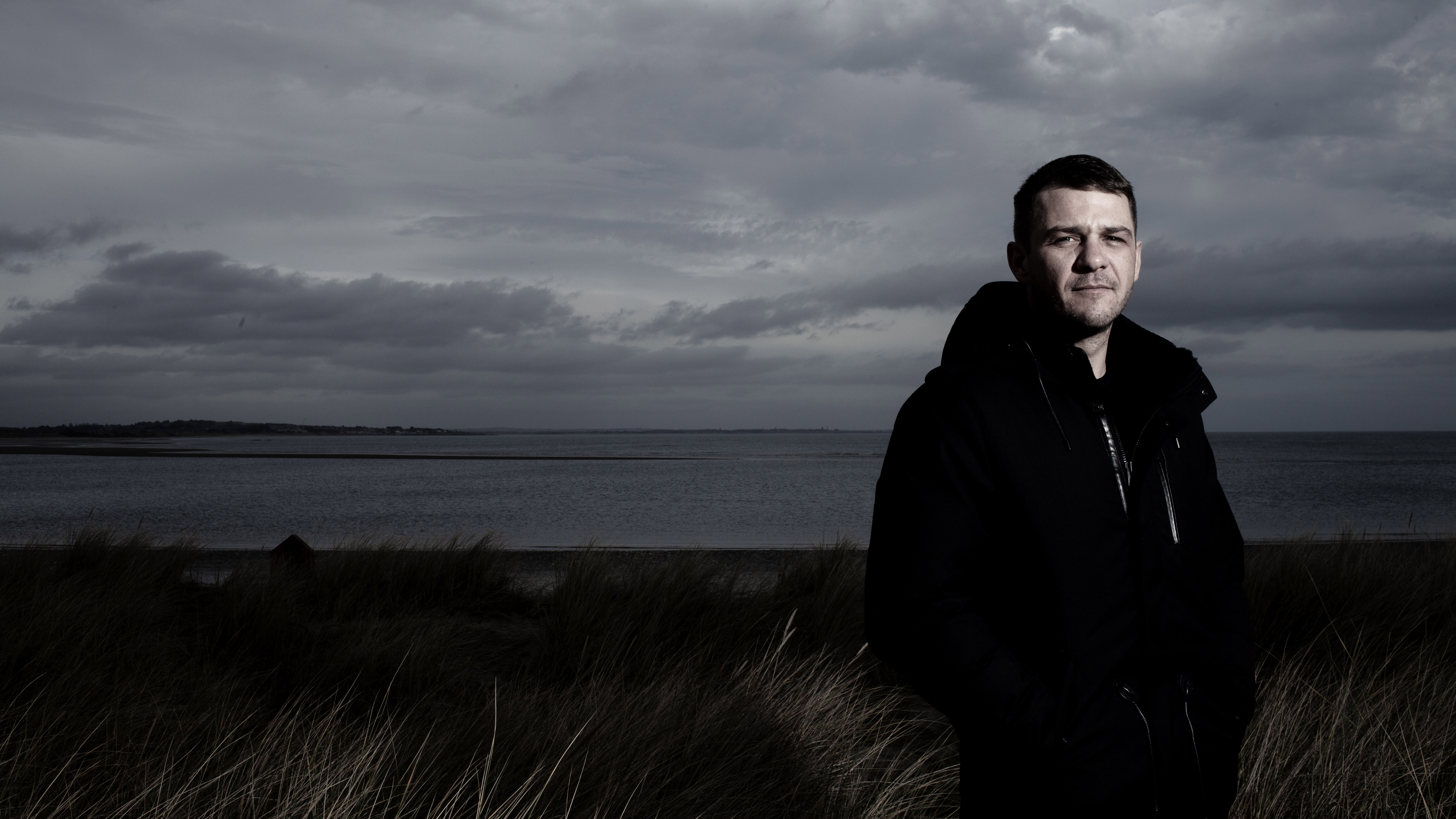
Despite a decade’s worth of DJ gigs under his belt and a handful of releases to complement them, Gavin Lynch was still trying to make a name for himself when Richie Hawtin turned up to watch him play at Dublin’s Redbox. After a brief conversation, the techno legend’s instruction was clear – “write me some demos!”. With no greater incentive, Lynch got busy, signed to Hawtin’s M-nus imprint and never looked back.
More recently, Lynch has created the Rukus label to oversee his own tracks from conception to release and open the door for new artists. As Matador, his packed touring schedule has created a solid DJ foundation alongside a growing catalogue of driving techno releases, exemplified on his spacey 2016 debut album, Ructions. With his upcoming Cyclone series, Lynch promises a throbbing new club sound, swiftly followed by the launch of a brand new hardware-centric live show.
Presumably, you were DJing long before you got into production?
“I’d already had eight or nine years of DJing under my belt before I enrolled as a sound engineer at college. It was the usual story. I got a set of turntables when I was 15, had a handful records and learned to mix them. I started travelling up to Dublin and buying the records, but got pissed off at not having enough of one particular style of music. Like most producers, that forced me into the studio to try and create what I wanted to hear played. I was after a sort of dark beat, techy sci-fi sound with interesting synths that had a certain drive and melody; it couldn’t be soulless.”
How did you go about building up your studio?
“The first thing I was interested in was Reason 2.0. Later, I linked into Cubase SX and the whole Rewire thing, then I remember going off on my own. The college course I took didn’t cover Ableton and I knew I wanted to get involved in that on the live/DJ front. Once I had the software in place there was obviously a lot of VSTs and plugins involved, but I was always curious about using hardware. I remember getting my hands on a Roland SH-101, owned by the head of the college, Les Stapleton, who turned out to be one of my mentors in the end.”
By getting into computer software, I learned about signal flows, and with hardware I learned about EQ, compressors and desks.
What did you learn from Les?
Want all the hottest music and gear news, reviews, deals, features and more, direct to your inbox? Sign up here.
“He was a massive synth fanatic, so to have him driving the course was a privilege. I took his SH-101 away for a couple of months, which turned into six months. I wanted one for myself but kept losing bids on eBay. In the meantime, I got a MicroKorg. Both that and the SH-101 opened up everything. I didn’t have expensive preamps or anything like that, just a small Apogee Duet interface, but I noticed the difference straightaway when it came to creating basslines, lead lines and percussive stuff.”
Would you recommend that people take a course to get a head start on the technical side of production?
“I think so because it gave me a good understanding of what audio is. If someone’s starting DJing, I’d always tell them to get a set of technics, vinyl and learn how to mix two records together before they start working with CDJs and digital stuff in the computer. When I started, I was miking up drum kits, guitars and amps to get an understanding of tuning. By getting into computer software, I learned about signal flows, and with hardware I learned about EQ, compressors and desks. That physical understanding was a real eye-opener and made it so much easier to understand computer processes that you can’t touch because they’re not tangible. You’ll advance a lot quicker if you have a few of those basic skills.”
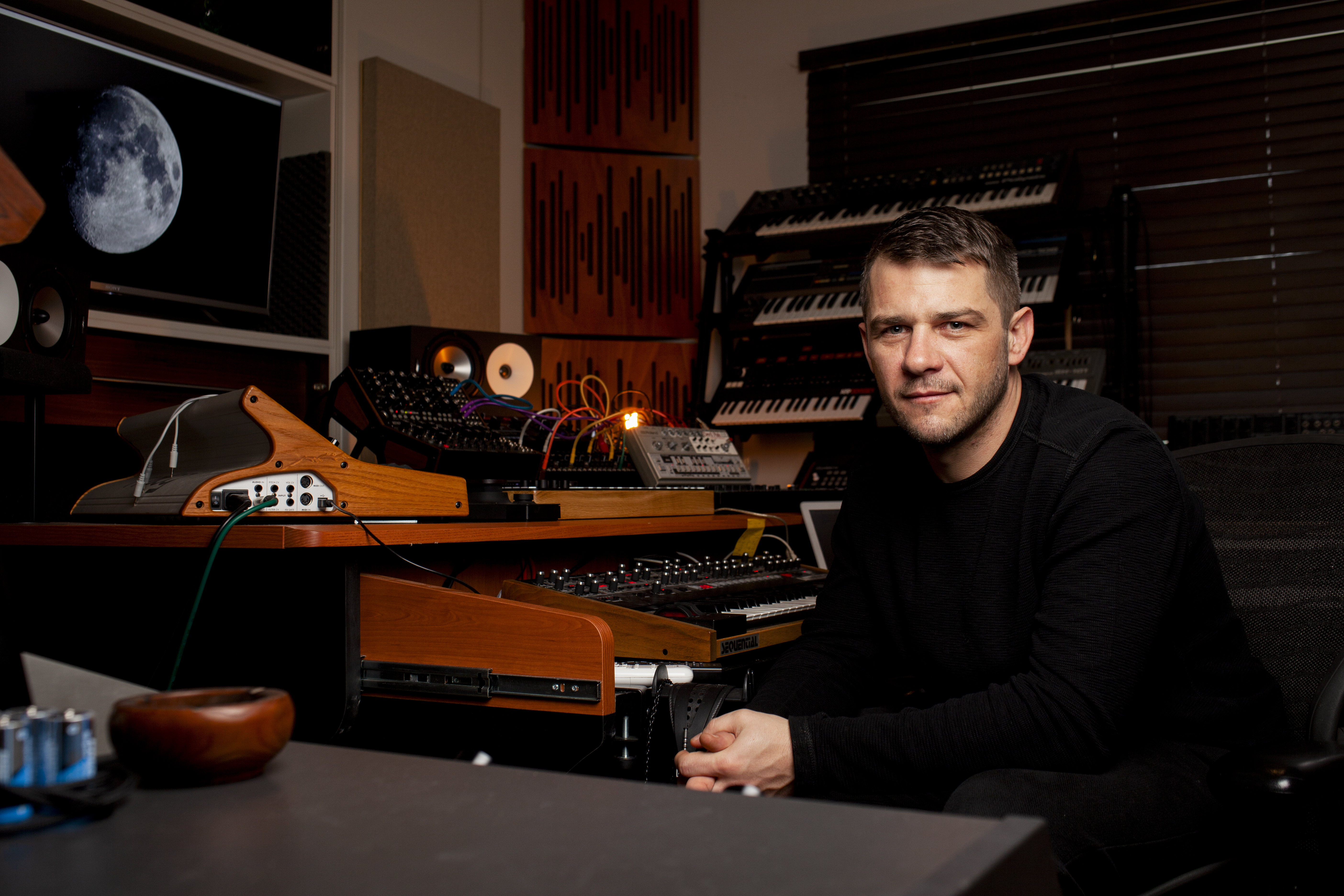
Is it true that Richie Hawtin was so impressed with your demo tape he came to watch you play a set?
“I was sending him music on SoundCloud for about six months and hadn’t heard anything. Then I was scheduled to play a gig in Dublin and got this random email from Richie saying he was listening to my music. I’d already released some of the tracks I’d previously sent him, but told him I was currently in writing mode. He said, super, keep on sending stuff. Then I remember standing on stage and the geezer was standing behind me during my set. We had a good chat afterwards and I left with a plan to write a shitload of music.”
That must have been quite some motivation?
“It was certainly a pinch yourself moment. I remember turning to my mate and saying, right, let’s just get the fuck out of here now! That was the biggest drive I could get and I knew what I needed to do. Within six months, all that music was submitted and they ended up signing 14 tracks in one go, spread over two or three EPs.”
What do you do when you’re not ‘feeling it’ in the studio?
“I’ll keep on muscling, but sometimes you need to take a break and walk away for a few hours or a day. For the last few years I’ve tried to take two months off, pretty much lock myself away and grow a big Tom Hanks Castaway beard. I’m getting a lot more done that way – I’ve got about 8-12 tracks finished this year, which is pretty much unheard of.”
For the last few years I’ve tried to take two months off, pretty much lock myself away and grow a big Tom Hanks Castaway beard. I’m getting a lot more done that way.
Oddly enough, it’s been written that you see a link between Pink Floyd’s Dark Side of The Moon and your creative process in terms of taking people on a journey?
“Absolutely. Once you get into an environment where it’s all going down, be it at a club or a live show, there’s a flow or a journey reflected in the programme of who’s playing. Even if I’m making an EP or LP, I’ll be writing eight to 12-minute long ambient pieces that may not ever see the light of day but they’re part of the writing journey. A big individual club track has to have its peaks and troughs and do different things because, these days, consumers are wise to repetition and lose interest very quickly.”
What can you tell us about the new Cyclone releases? Sounds like it might be a return to techno’s roots?
“Because my Rukus label is all digital it’s an opportunity to release something physical that’s a bit harder and edgier for an exclusive white label release. It’s tailored more towards the acidy hard end of techno that’s quite popular at the moment. It ties into my new live show, which is driven by a second studio full of acidy old Roland stuff, and I’m taking all that gear on the road so I’ll be writing and touring with that rig. It’s been very well received so far and we’re looking to release at the end of May and tour the Cyclone series at the end of the year. We’ll be releasing something on Richie’s Plus 8 label as well – he’s bringing it back from the ’90s.”
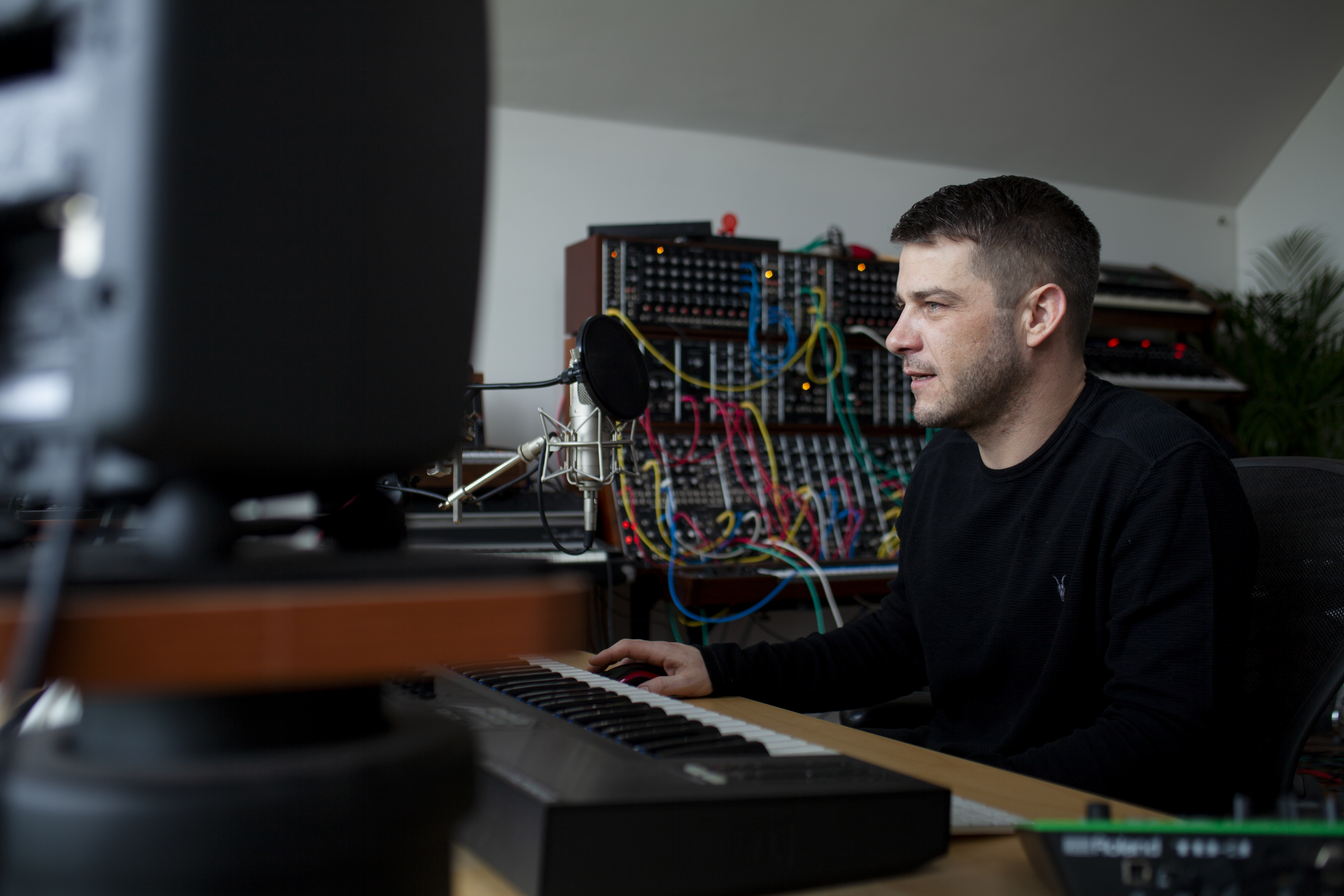
Presumably, it’s the hardware driving this new hard-edged techno sound?
“I’ve picked up one of those Devil Fish TB-303s, which is dangerous. It’s an amazing piece of gear and I can’t keep my hands off it. I’m already a massive fan of that Roland sound and I knew that if I was going to do a 2.0 live show, there’d need to be hardware involved. I want people to see where this is coming from rather than clips in Ableton.”
You’re talking about the TB-303 modification?
“The 303 itself is obviously from the ’80s and they’ve released the Boutique series, but the Devil Fish is not that. It’s an original 303 modification designed by a guy in Sydney – let’s call it a souped-up 303. It’s got a distortion muffler on it, FM and a series of inputs on the back that allow you to integrate it into your modular Eurorack setup, which is something I’ve done. I guess it plays a central role in my new rig. They’re hard to come by. A lot of people aren’t willing to part with their 303 for a couple of months and send it off to Australia, but one popped up online so I snapped it up straightaway. ”
Roland Jupiter-6
“Everyone leans to its big brother, but I can’t keep my mitts off the 6. Everything sounds like it’s coming direct from outer space. It’s like magic!”
Amphion One18 monitors
“I wanted monitors to fit this room and work on lower levels, and boy do these work. If you can get your mix sitting sweet on these, it translates like pure silk over onto any other system.”
Polyend SEQ
“Hands-on sequencing outside of the box. I got this unit for my new 2.0 live show and I’ve ordered another one for the studio. This really increases my workflow quite dramatically!”
UA Apollo 16
“It’s a key part of the setup in this room and my new live rig. It’s got fantastic converters and incredible plugins that I can’t go without.”
Sequential Prophet XL
“I got this after a chat with its maker, and I’m glad I did. We can all pull pure synth sounds out of the source, but with the additional layering possibilities, the sounds that come direct from the XL are incredible. A versatile piece of kit that feels great to play.”
Will you schedule off some time to experiment with hardware?
“No, I’ll tend to just start off with a hook, but I have this new piece of kit called the Polyend Seq, which is a 32-step hardware sequencer. That’s where I’m starting all my tracks at the minute, along with the 303, old 808/909 drum machines and a synth. I find that’s a quick generator of ideas, and when I’m travelling I’ll use all the Roland cloud stuff and hardware emulations. Because I have the hardware, I can relate to the software quite quickly and get it sounding alright between that and the Universal Audio plugins. But you know and I know there’s something hands-on about a piece of hardware. It’s not for everybody, but I find that it’s better if you can have a least one piece of hardware to bring you away from the box, even if it’s a MIDI controller for mapping.”
Has that approach changed your music?
“I think so. Once you get away from automation, the music has a looser feel. When you’re running VSTs, everything tends to sound so tight, and I know there are applications within soft synths to loosen things, but when you’re working by hand it gives you a whole different feel on the audio side. I feel there’s much more depth, scope and range within hardware sounds. The new setup I have is a laptop running Ableton, which sits over to my right side well out of view so I’m not looking at that except for a bit of editing and recording.”
Your choice of sounds is pretty sparse. Do you spend a lot of time agonising over timbres?
“I guess that comes from when I linked in with Rich and the whole M-nus crew – the clue is in the name. I spent a year getting my head around that whole less is more approach. At college we’d throw the kitchen sink at a track and have every corner of the spectrum filled. I remember doing one track and when I spoke to Les about it he told me how he could hear the silences and the way the reverb tail blended with the next sound. Something clicked at that point and I started to look more at the visual spectrum.”
Do you need a visual representation to guide you or can you just go by ear?
“I’ll keep an eye on frequency spectrums to get a visual understanding of where everything is. I tend to place a screen between the speakers so I’ll have a big rectangle displaying where stuff is. You can trust your ears, but I like a mix of tools – it’d be stupid not to use everything at your disposal.”
Has modular been more recent for you?
“I went through a lot of the classic synths that I’d had on my dream list, then I started looking at different modular systems. I went through these guys in Portugal called Club of the Knobs who make modular clones, so I got a Moog System 55 and built that up with sequencers. I guess that was my first step into it, and more recently I’ve got into Eurorack stuff like the Roland System 100.”
What would you recommend about the Moog System 55?
“Err, take out a big fucking loan is what I’d recommend [laughs]. It’s a unique piece that looks great and sounds amazing. I bought the European version because Synthesiser.com has a very similar product. Getting an old one is very costly to maintain and tune, but this one is pretty much a replica and the guy I bought it from ironed out quite a lot of those issues. The model I’ve got is similar to Junkie XL’s – I’ve followed his spec. So far, I’ve got everything out of that from lead lines to big ambient drones and phasey basslines – it really has that Moog sound.”
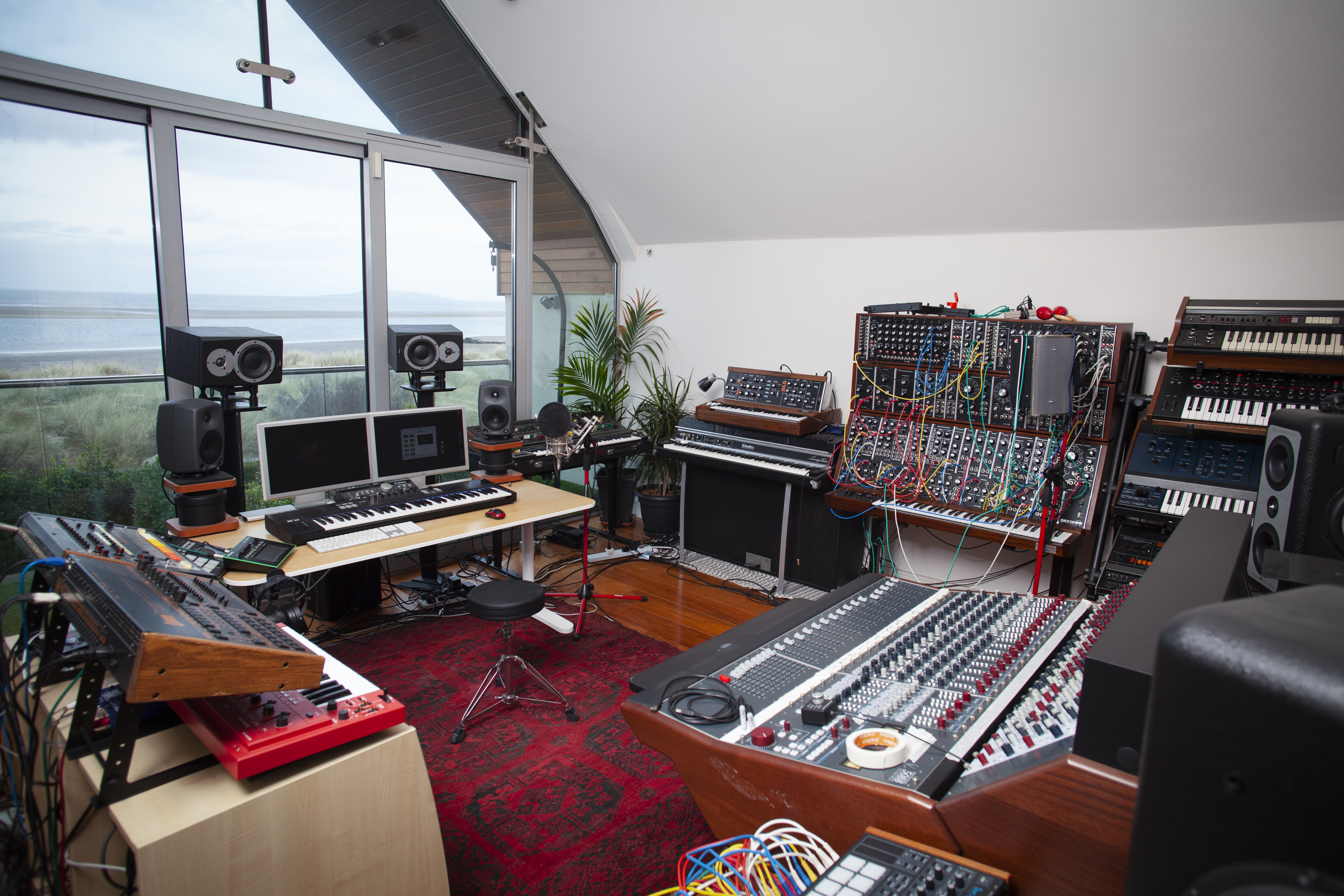
Do you discipline yourself with modular?
“You can get lost in it; sometimes hours and days go past while you’re figuring out how to set up a patch. If you’re going to take that route, the Eurorack stuff seems to be pretty cool. It’s a lot more accessible, but there’s so much of it that it’s also a lot more dangerous on the wallet. I’m en route to the modular Betty Ford clinic.”
Do you tend to record hours of audio and select from that?
“Sometimes I’ll record everything and noodle away for a few hours, but time tends to be precious. There’s a couple of patches I know inside out and can get to quickly if I want to get a bass or lead line – and there’s a particular tone I go for, but there’s so many opportunities to divert.”
When you re-patch does it sound the same every time, or is it quite temperamental?
“You’re right, there’s always some sort of weird discrepancy. I find that for the first hour the modular’s turned on, you can forget about it. I’ve monitored it, and when it’s warming up, the pitch will drift up to 22-23 cents either way on some of the oscillators. I suppose it’s what you’d expect from the old ones, but not something built three or four years ago. But there’s also a charm to that which I love – it shows that it’s real.”
Do you obsess over audio quality at source or leave that to the mix stage?
“I try to get everything sounding very sweet at source. I went through a phase for years where I was not a fan of adding EQ; I wanted to get a synth sound where all I had to do was subtract. That led me to getting a really good source sound as a rule. I’ve worked in studios where people say, ah, we’ll fix that later on, but I hate that approach. I’ve got my studio to a place where the source is as excellent it can be, save for some delicate post-production. I have a Neve 5088 console and love mixing on it. I have some nice hardware too, but all I’m looking to do is create a nice glue of sounds where everything sits together, nothing is harsh on the ear and I don’t have to add stuff.”
Are you sourcing sounds from any other hardware units?
“I have a couple of synths coming in the post. There’s an ARP 2600 on its way that I can’t wait to get and the new Moog One. More recently, I’ve been using an Oberheim OB-8, but there are loads of others. I’ve got an OB-6, Voyager, Tempest and a Virus TI in one room, a Prophet-6, 12, X and 5 Rev 3 and some drum machines like the LinnDrum LM-1, an original 808, 909 and two SH-101s. I really like the Roland VP-330 vocoder. So yeah, some nice bits and pieces!”
We don’t hear the vocoder much in your sound to be honest. Are you running various sources through it?
“All sorts. There’s a really nice string sound on the VP-330 too, which I’ve used quite a bit. I used the vocoder a lot when I got the unit, but some of that music hasn’t seen the light of day yet. Last year, I was involved in recording around 110 tracks that were finished to a reasonable standard, but only eight to 10 of them have actually been released.”
So you’re using hardware effects rather than manipulating sounds using software?
“Everything gets hit with hardware in some fashion. Effects-wise, reverb is where it’s at. In the initial stages, I’ll use Universal Audio’s Lexicon 224 plugin or something like that, but once I’m out onto the desk I’ll tend to use the Bricasti M7 and I’ve stacked the penthouse with Shelford 5051 and 5052s. At the Neve end of things, there’s the stereo compressors, Five Band EQs and tape emulators. I call that ‘Studio Two’ because that’s where I go when the music’s finished.”
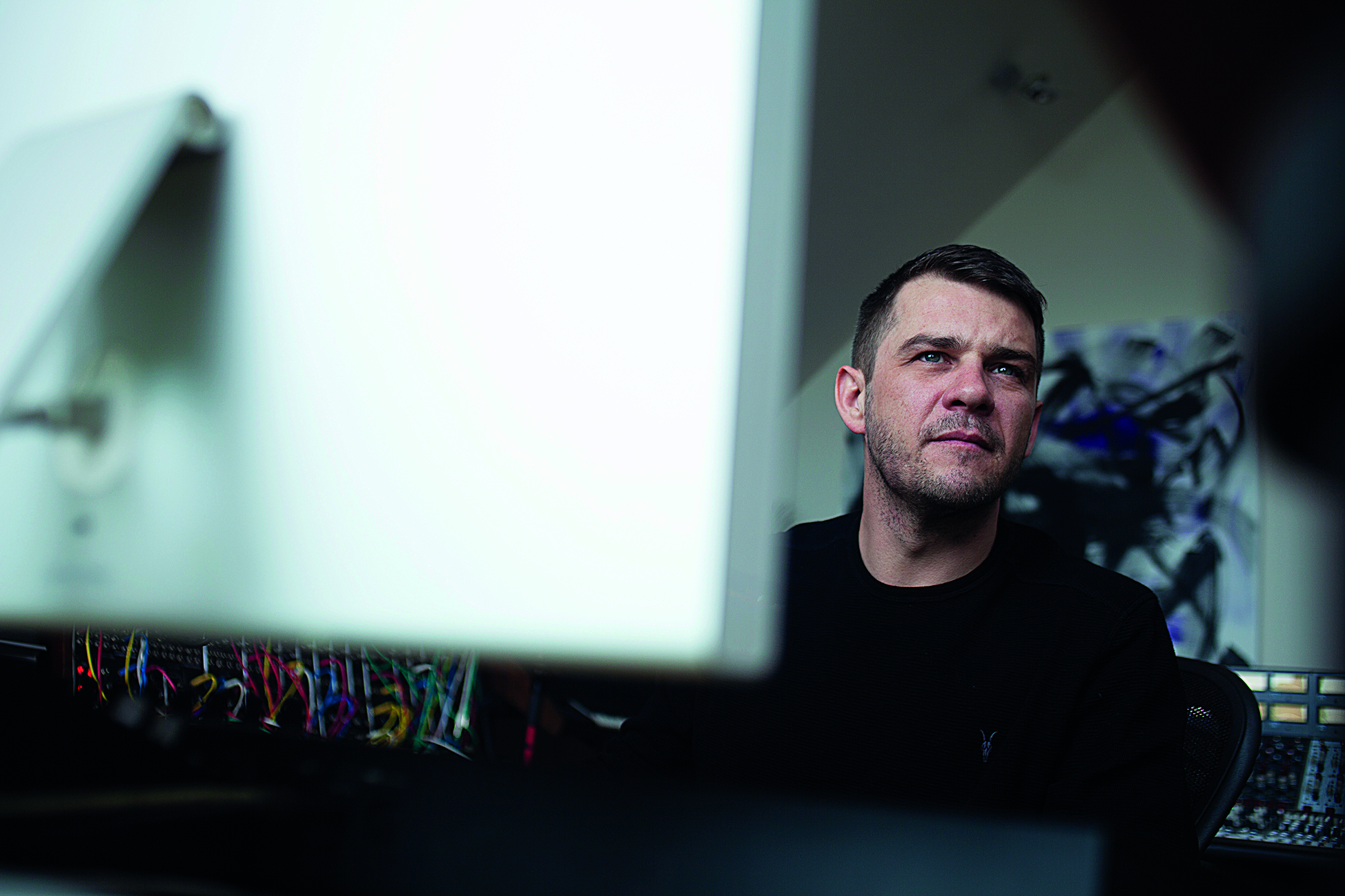
You pretty much master your own tracks too?
“Yes, 80% of the time. I do have a mastering engineer who’s amazing, but for some reason I always end up using my own masters. As I’m writing I’m mixing, and as I’m mixing I’m thinking about mastering, like what’s popping up or going to trigger that limiter? I can go in and out of that session as I please and get it to a pretty loud place without it sounding shite. I have a really good mastering chain and like to think my ears are in a place where I can do that, even if it’s not something I’d necessarily recommend.”
So what’s your mastering chain?
“There are two racks at the side for my mastering chain and drum busses. On the preamp side, I’ll use the Thermionic Culture Vulture and LA-610s MkII channel strips which, synth-wise, I drop in and out on most things. For my drum bus, it’s the API 2500 hardware version every time, plus I’ll use the SPL Transient Designer for a bit of processing on individual tracks where needed. On my mastering bus, I have the Manley Massive Passive EQ and Shadow Hills mastering compressor. Pretty much every track I’ve made in the past year has gone through that chain.”
Does your reliance on hardware explain the switch from Logic to Ableton?
“I was a Logic man for years, but in the last three of four months I’ve tapped back into Ableton for the exact reason you’ve mentioned. It’s become more of a tape recorder and I find it a lot quicker and more efficient to get ideas down and arranged on. That’s why I’ve moved to having a little laptop sitting in the corner. I’m using it a little more now to develop tracks, but in the initial stages it’s pretty much just on record mode.”
Sound-wise, some producers are not sold on certain aspects of Ableton, but you’ve pretty much sorted that before it goes in the box?
“It’s down to your summing at the end, which is one of the main reasons I moved away from Ableton. I’d used it for three or four years and just got sick of the summing – it simply wasn’t up to par. I wrote one song in Logic 8 or 9 and the way the stuff glued together made more sense and it sounded lush compared to Ableton. I moved to Logic for four or five years, but it almost became obsolete because everything was reduced to stems, summed and mixed on my summing mixer.”
You mentioned that you write on the road occasionally. How does it compare when you don’t have the hardware to hand?
“I was writing in Australia a couple of weeks back and had a couple of bits of hardware, but it was all mixed in the box with UAD plugins, tested out and played at festivals during the course of that tour. I’ll go back in, substitute basslines and give the mix a tweak across the board, but it delivered straight out of the box so it’s shockingly good where software’s at now.”
Any software you’re a fan of?
“I’ve been using the Roland Cloud series of soft synths, like the Juno-106, SH-2 and System 100 series – all that Roland stuff’s amazing. One of my mates swears by Omnisphere, so I took a listen and it’s great, but the Roland drum machines and the Arturia collection’s amazing too. Plugin-wise, I’ll use the Universal Audio stuff – that’s some high-end software for polishing.”
We’ve read that your upcoming live shows will be live in the truest sense of the word?
“The rig that I’m writing all this acidy Cyclone stuff on is the rig that I’ll use on the road. It’ll comprise of the Roland modular, the Devil Fish 303 and another 303, analogue sequencers, the Moog Sub 37 and Prophet-6. The Polyend Seq will be at the core of it and that’s rock solid. Once the clock, signal and CV gate is sent out, I don’t feel I’ve too much to be concerned about. The setup will push me to do different things and the live show will have its peaks and troughs and be played at much more select and specified venues. I’m very excited to get my head out of the computer for those six or eight shows this year.”
The Matador & ARTBAT EP, Apollo 11, is available now on Rukus. For more information, visit Matafor on Facebook .


Future Music is the number one magazine for today's producers. Packed with technique and technology we'll help you make great new music. All-access artist interviews, in-depth gear reviews, essential production tutorials and much more. Every marvellous monthly edition features reliable reviews of the latest and greatest hardware and software technology and techniques, unparalleled advice, in-depth interviews, sensational free samples and so much more to improve the experience and outcome of your music-making.
